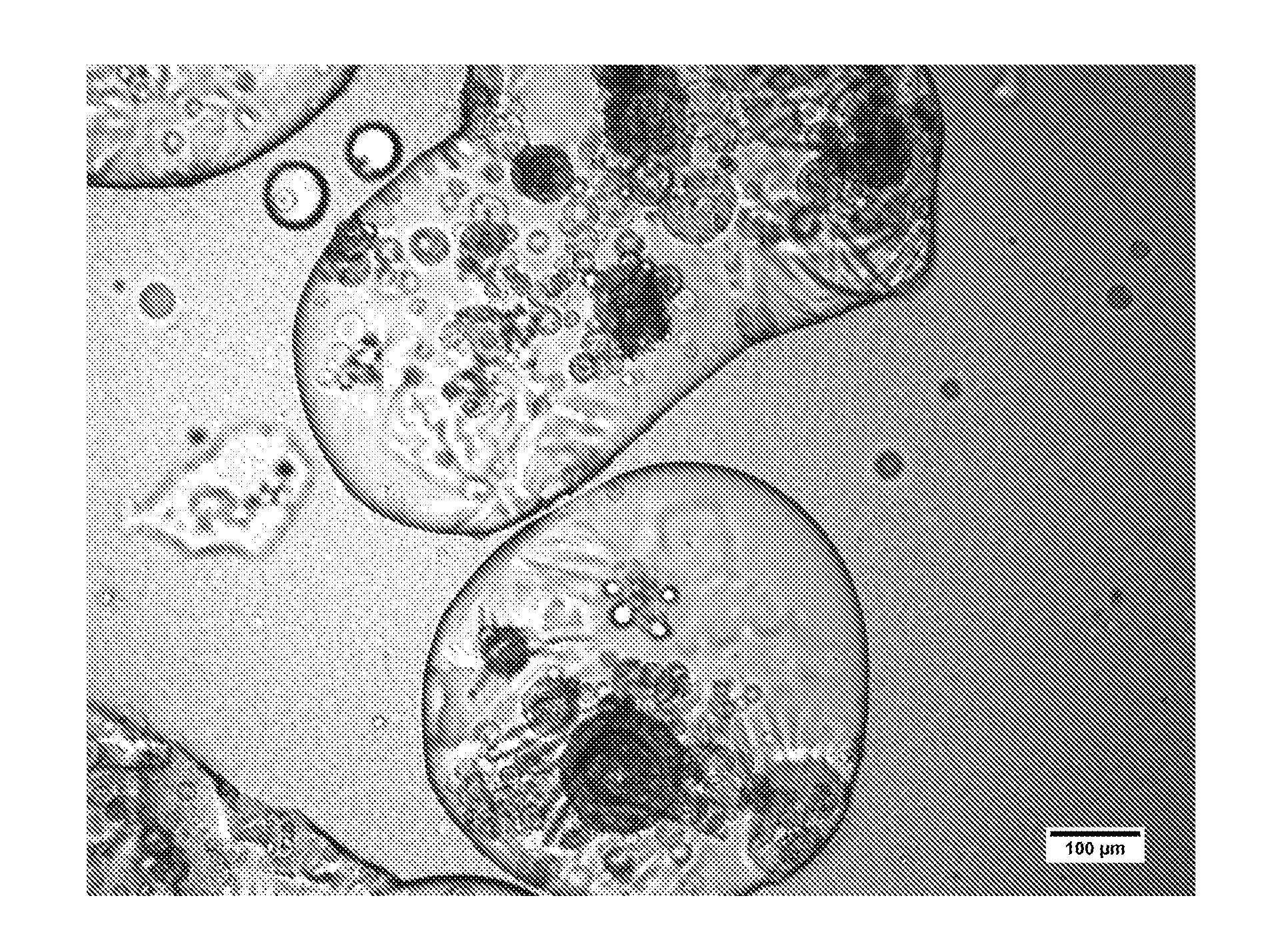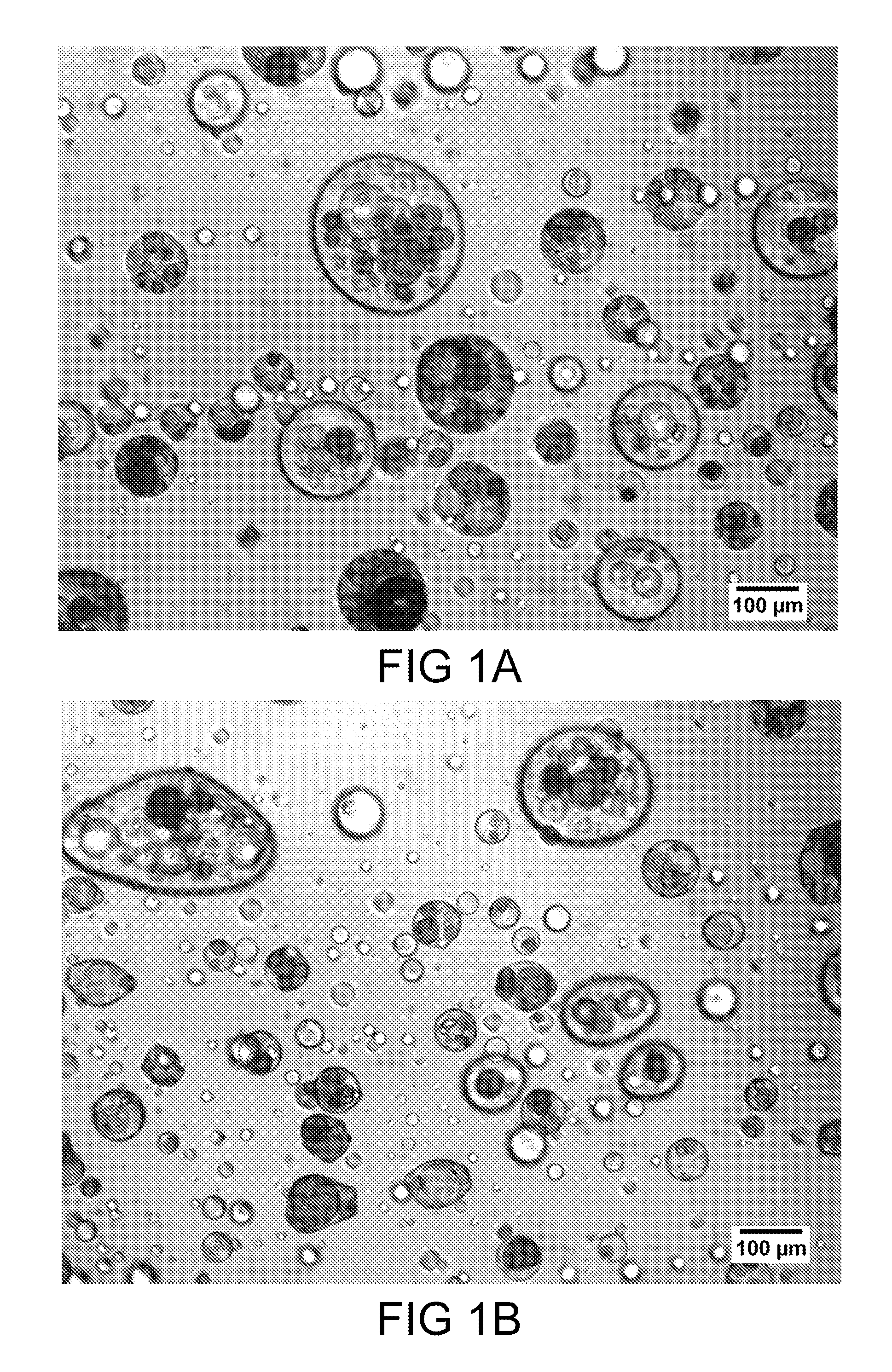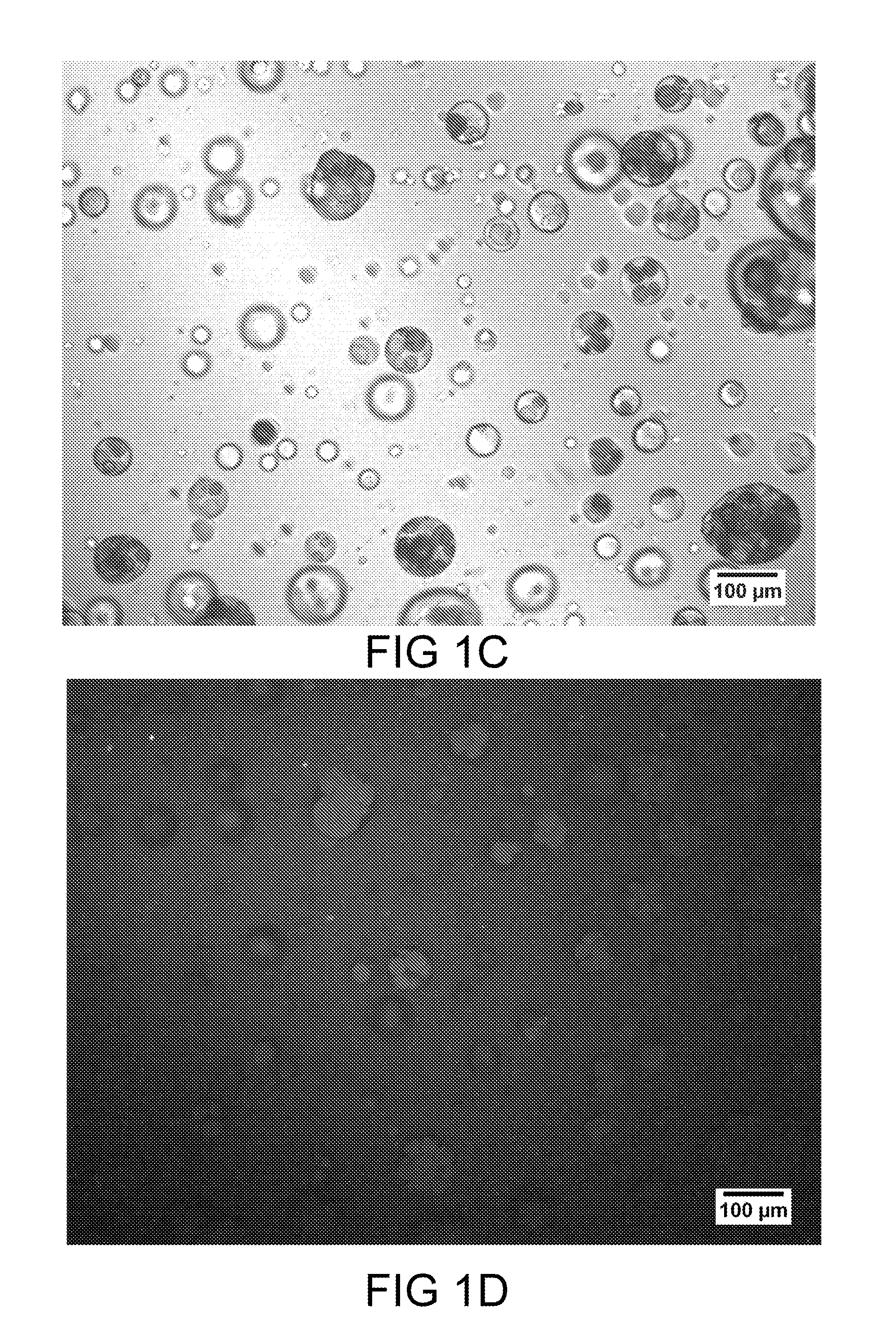Dosage form comprising an active ingredient and a plurality of solid porous microcarriers
a technology of solid porous microcarriers and active ingredients, which is applied in the field of dosage forms, can solve the problems of multiple steps, difficult fabrication of water-in-oil-in-water emulsions, and difficulty in protecting active ingredients
- Summary
- Abstract
- Description
- Claims
- Application Information
AI Technical Summary
Benefits of technology
Problems solved by technology
Method used
Image
Examples
example 1
Dosage Form Comprising Surface-Modified Microcarriers and an Antibiotic
[0108]A dosage form was produced in accordance with the teachings herein, and demonstrates certain aspects thereof. The dosage form was prepared from the materials listed in Table 1. A plurality of solid, porous microcarriers, each with a hydrophobic surface was prepared. Specifically, a plurality of hydrophilic solid, porous microcarriers (granulated colloidal silicon dioxide (AEROPERL 300 PHARMA), a silane coupling agent (trimethyoxy(octadecyl)silane), and a suitable solvent (toluene) were combined to form a mixture. The microcarriers employed have an average particle size of 30 to 40 microns, and are mesoporous, having a pore volume of about 1.6 ml / g. The reaction mixture was heated under vacuum in a rotary evaporator (Buchi Labortechnik AG, Flawil, Switzerland) starting at a temperature of 100° C. over a period of 30 minutes to remove the solvent. The mixture heating continued until the solvent was removed, o...
example 2
Dosage Form Comprising Non-Surface-Modified, Hyrophilic Microcarriers and an Antibiotic
[0114]A dosage form was produced using a plurality of hydrophilic microcarriers instead of a plurality of hydrophobic microcarriers to demonstrate the difference in the two approaches, and the benefits associated with use of a hydrophobic microcarrier. The dosage form was fabricated as described in Example 1, with the following modifications: (1) in the first step of the process, a surface-modification step was omitted (formation of a plurality of hydrophobic microcarriers) and (2) in the third step, granulated colloidal silicon dioxide (AEROPERL 300 PHARMA) (0.5103 g), which has a hydrophilic surface, was mixed into the minocycline-ethanol solution in the place of the plurality of hydrophobic microcarriers.
[0115]Assessment of the dosage form was performed by microscopy and fluorescence microscopy as in Example 1. A representative image is shown in FIG. 2. In color versions of the image shown in F...
example 3
Dosage Form Comprising Surface-Modified Microcarriers and a Magnesium-Stabilized Antibiotic
[0116]The encapsulation demonstrated in Example 1 provided a physical separation of a hydrophilic active ingredient and a hydrophilic delivery agent. Additional stability can be accomplished by further stabilizing the active ingredient. For example, minocycline can be stabilized with magnesium or by other methods known to those skilled in the art. A dosage form was fabricated as described in Example 1, substituting magnesium stabilized minocycline in place of minocycline.
[0117](AEROPERL 300 PHARMA), a silane coupling agent (trimethoxy(octadecyl)silane), and a suitable solvent (toluene) were combined to form a mixture. The microcarriers employed have an average particle size of 30 to 40 microns, and are mesoporous, having a pore volume of about 1.6 ml / g. The reaction mixture was heated under vacuum in a rotary evaporator (Buchi Labortechnik AG, Flawil, Switzerland) starting at a temperature of ...
PUM
| Property | Measurement | Unit |
|---|---|---|
| pressure | aaaaa | aaaaa |
| pressure | aaaaa | aaaaa |
| particle size | aaaaa | aaaaa |
Abstract
Description
Claims
Application Information
 Login to View More
Login to View More - R&D
- Intellectual Property
- Life Sciences
- Materials
- Tech Scout
- Unparalleled Data Quality
- Higher Quality Content
- 60% Fewer Hallucinations
Browse by: Latest US Patents, China's latest patents, Technical Efficacy Thesaurus, Application Domain, Technology Topic, Popular Technical Reports.
© 2025 PatSnap. All rights reserved.Legal|Privacy policy|Modern Slavery Act Transparency Statement|Sitemap|About US| Contact US: help@patsnap.com



